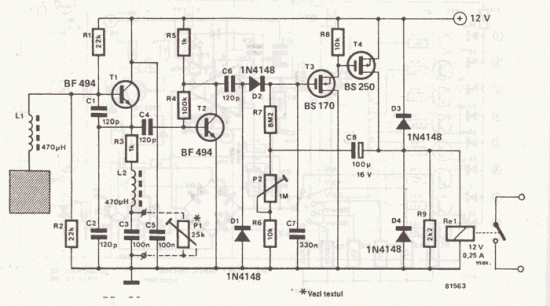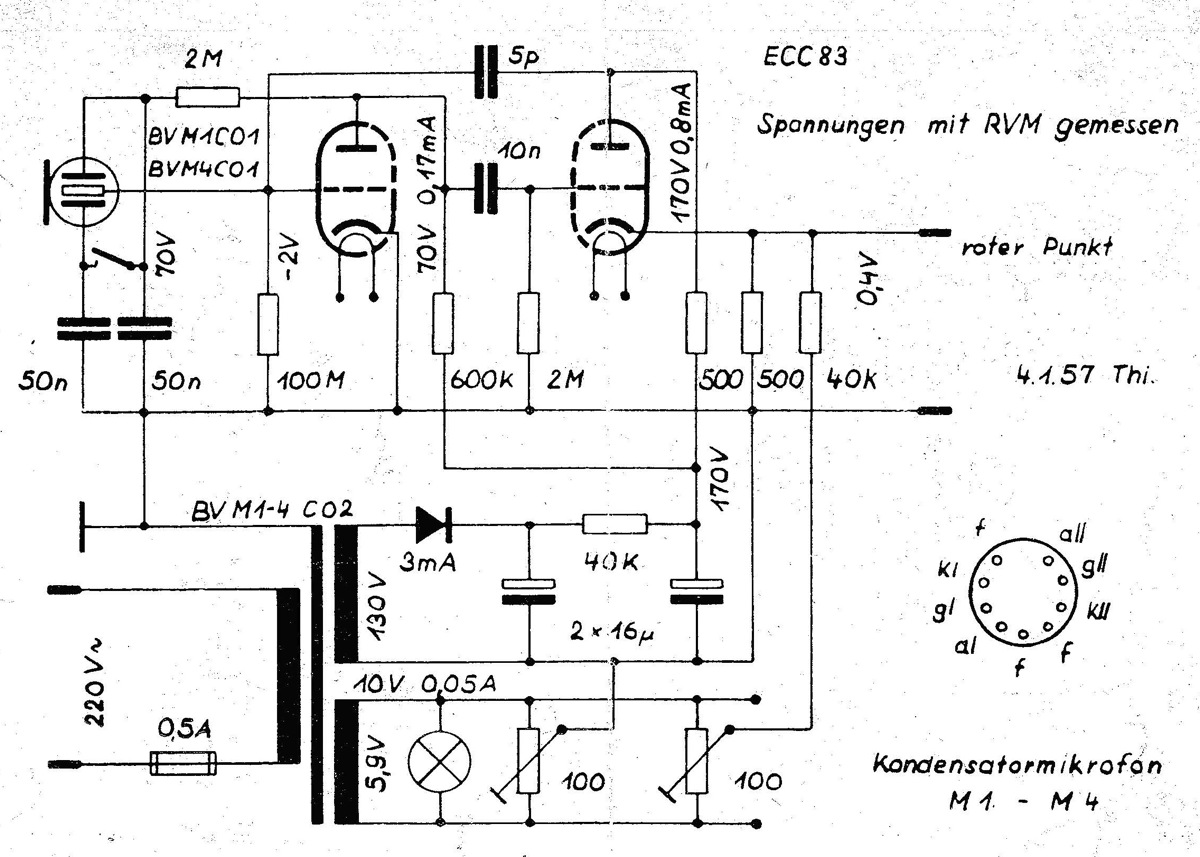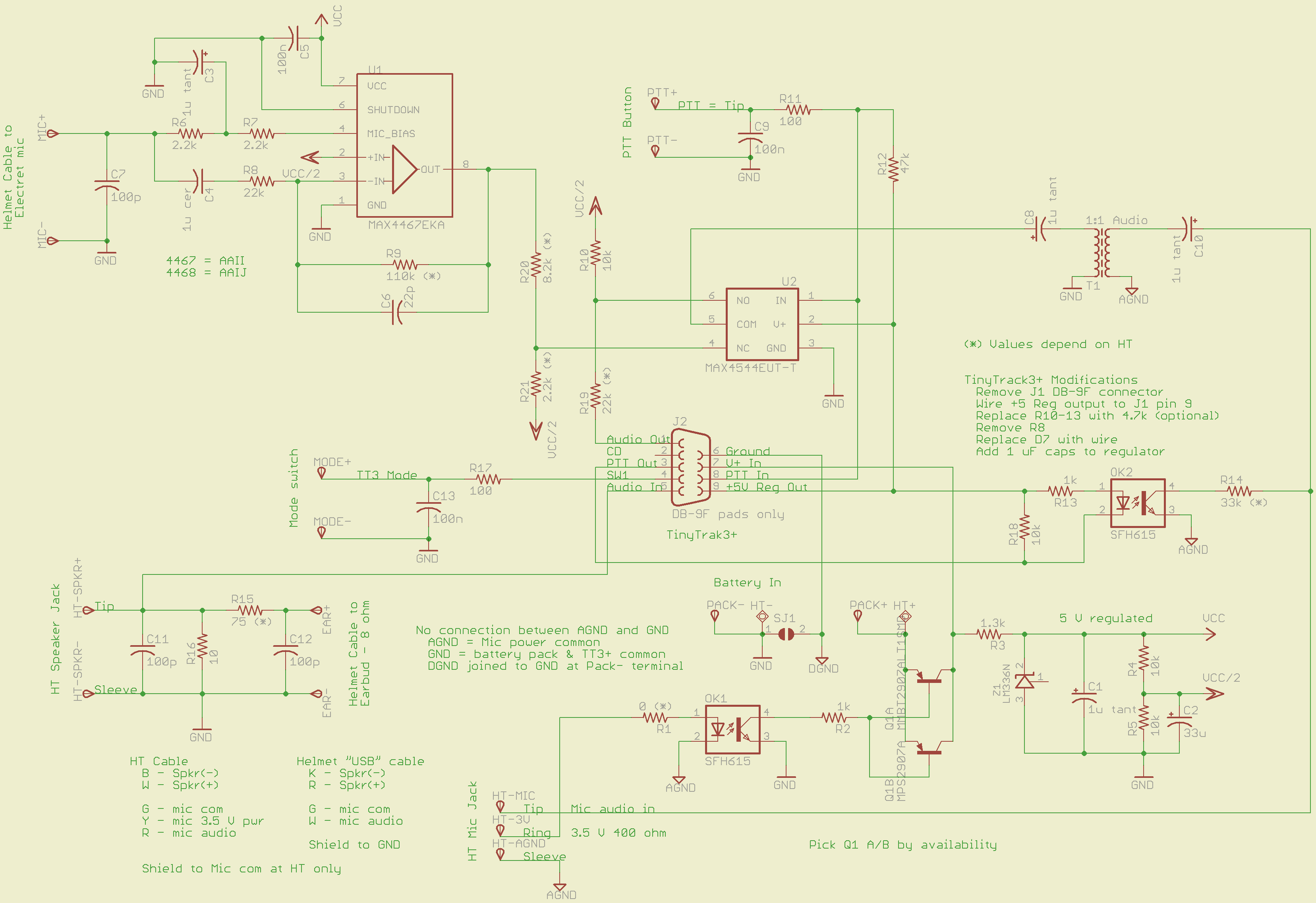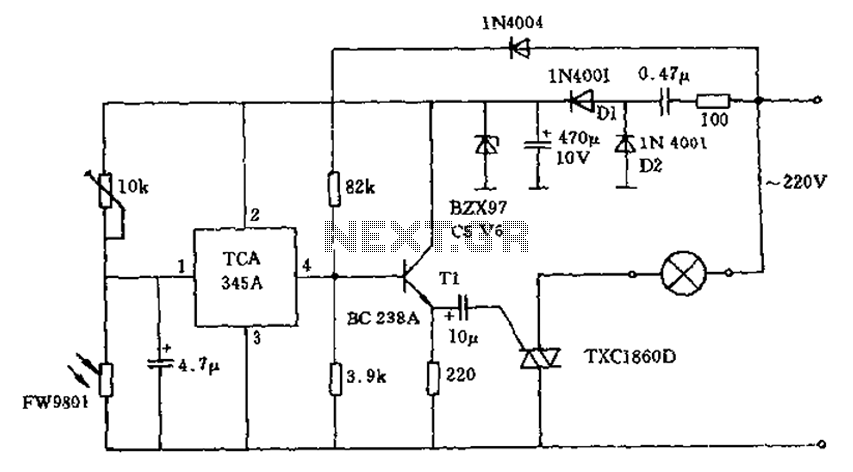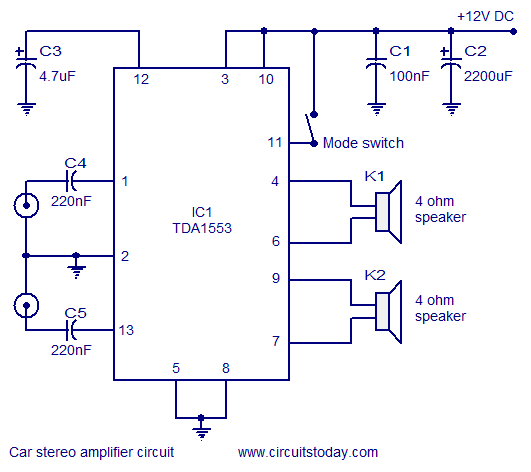
gold detector schematic
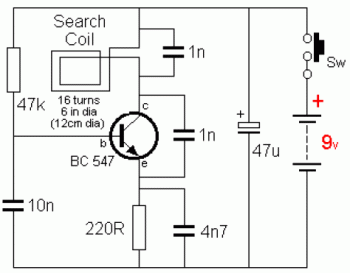
This is a simple and easy-to-build gold detector circuit. The circuit is capable of sensing gold, metal, or coins from a distance of approximately 20 cm, depending on the size of the object being detected. It oscillates at around 140 kHz, and a harmonic of this frequency can be detected by an AM radio. The radio receiver can be tuned until a squeal is detected. The PCB can be created in straightforward steps. Design the PCB using software like Eagle, print the design on photo or glossy paper with a laser printer, and adhere the printed design to the copper side of the PCB. Then, heat it with a hot iron plate for the ink to stick to the PCB, preparing it for the etching process. If a laser printer is unavailable, the design can be printed on standard paper and copied onto glossy paper at a local copy service.
The gold detector circuit operates on the principle of electromagnetic induction, where an oscillating current generates a magnetic field that interacts with conductive materials, such as gold or other metals. The circuit consists of a basic oscillator circuit, which can be implemented using a transistor or an operational amplifier. The frequency of oscillation is set around 140 kHz, which is suitable for detecting small metallic objects.
To construct the PCB, a layout is created using PCB design software, such as Eagle. The layout includes traces for power, ground, and signal paths, as well as pads for component placement. After printing the design onto glossy paper with a laser printer, it is carefully aligned and adhered to the copper-clad PCB. The application of heat from a hot iron plate transfers the toner from the paper onto the copper surface, creating a resist pattern for the etching process.
Once the PCB is prepared, it undergoes an etching process to remove the unprotected copper, leaving behind the desired circuit traces. This can be done using an etching solution such as ferric chloride. After etching, the board is cleaned, and components such as resistors, capacitors, and the oscillator circuit elements are soldered onto the PCB according to the layout.
The final assembly includes tuning the AM radio receiver to the specific frequency of the oscillator to detect the harmonic signal. This allows the user to identify the presence of gold or other metals within the detection range. The design and construction of this gold detector circuit provide a practical application of basic electronic principles and PCB design techniques.Here the very simple and easy build gold detector circuit. The circuit capable to sense gold or metal or coins from a distance of about 20cm, depending on the size of the object to detect. The circuit oscillates at about 140kHz and a harmonic of this frequency is detected by an AM radio. You can simply tune the radio receiver until a squeal is det ected. Make a PCB in very easy steps. ! Create your PCB design using PCB designer software like Eagle, print out your design on photo paper or glossy paper with laserjet printer. Stick the printed design on the PCB (copper side) and then heat it using hot iron plate. The ink will stick on the PCB and it will be ready for etching process. Note: If you don`t have laserjet printer, then you can print the design on standard paper. Copy the printed design at Copy Service around your location (with glossy paper). 🔗 External reference
The gold detector circuit operates on the principle of electromagnetic induction, where an oscillating current generates a magnetic field that interacts with conductive materials, such as gold or other metals. The circuit consists of a basic oscillator circuit, which can be implemented using a transistor or an operational amplifier. The frequency of oscillation is set around 140 kHz, which is suitable for detecting small metallic objects.
To construct the PCB, a layout is created using PCB design software, such as Eagle. The layout includes traces for power, ground, and signal paths, as well as pads for component placement. After printing the design onto glossy paper with a laser printer, it is carefully aligned and adhered to the copper-clad PCB. The application of heat from a hot iron plate transfers the toner from the paper onto the copper surface, creating a resist pattern for the etching process.
Once the PCB is prepared, it undergoes an etching process to remove the unprotected copper, leaving behind the desired circuit traces. This can be done using an etching solution such as ferric chloride. After etching, the board is cleaned, and components such as resistors, capacitors, and the oscillator circuit elements are soldered onto the PCB according to the layout.
The final assembly includes tuning the AM radio receiver to the specific frequency of the oscillator to detect the harmonic signal. This allows the user to identify the presence of gold or other metals within the detection range. The design and construction of this gold detector circuit provide a practical application of basic electronic principles and PCB design techniques.Here the very simple and easy build gold detector circuit. The circuit capable to sense gold or metal or coins from a distance of about 20cm, depending on the size of the object to detect. The circuit oscillates at about 140kHz and a harmonic of this frequency is detected by an AM radio. You can simply tune the radio receiver until a squeal is det ected. Make a PCB in very easy steps. ! Create your PCB design using PCB designer software like Eagle, print out your design on photo paper or glossy paper with laserjet printer. Stick the printed design on the PCB (copper side) and then heat it using hot iron plate. The ink will stick on the PCB and it will be ready for etching process. Note: If you don`t have laserjet printer, then you can print the design on standard paper. Copy the printed design at Copy Service around your location (with glossy paper). 🔗 External reference
